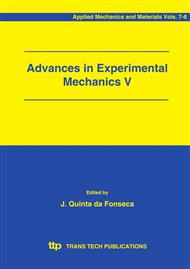p.243
p.251
p.259
p.265
p.271
p.277
p.283
p.289
p.295
The Application of an Active Vibration Regulation System to Improving Driving Comfort in Convertible Vehicles: A Comparative Study of Regulator Design Methodologies
Abstract:
This paper considers the development of an active vibration regulation (AVR) system on a convertible car equipped with a hydraulic actuation system. Experimental modal analysis is used to identify a model from the measured dynamic response of the car body and the hydraulic actuators. Two different methods are used to design the AVR system in the presence of process and measurement uncertainties, namely optimal feedback regulation and proportional-integralderivative (PID) compensation. With the aim of reducing the amplitude of the first eigenmode of the system considered, the AVR algorithms are digitally implemented and real-time experiments involving a hydro-pulse four poster rig are conducted. The results from these are evaluated and it is shown that the AVR systems achieve a significant vibration reduction in the first eigenmode, which is important for passenger comfort.
Info:
Periodical:
Pages:
277-282
Citation:
Online since:
August 2007
Price:
Сopyright:
© 2007 Trans Tech Publications Ltd. All Rights Reserved
Share:
Citation:


